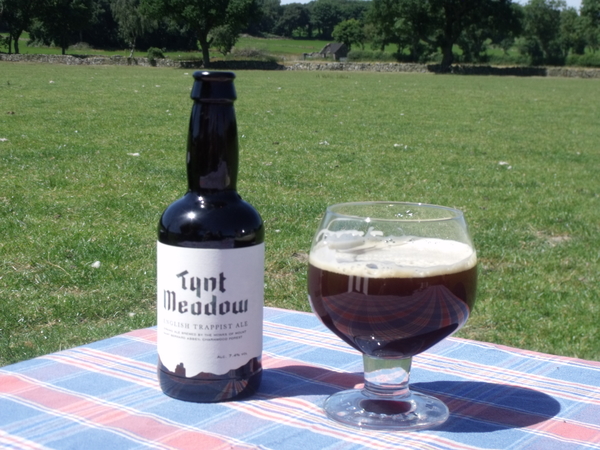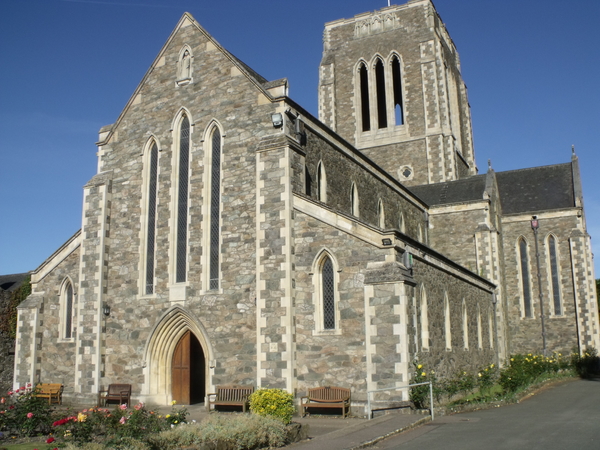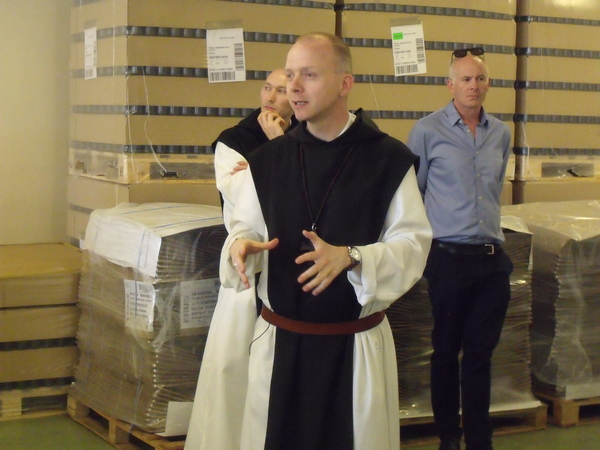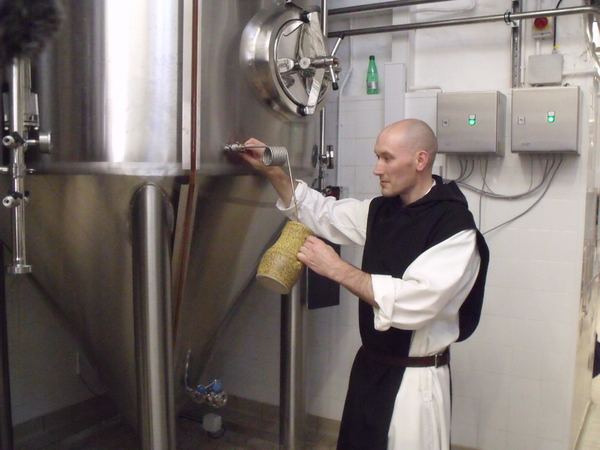Monks restore historic brewing tradition
Added: Wednesday, June 27th 2018

History was made at Mount St Bernard Abbey on 25 June when the monks launched their own ale – the first monastic beer brewed in England since the Reformation.
The abbey, near Coalville in Leicestershire, is a Cistercian church where the 27 monks are members of the strict Trappist order. Mount St Bernard is a member of the ITA – the International Trappist Association – made famous by the six monastic breweries in Belgium.
But the abbot, Dom Erik Varden (below), stressed that the Belgian brewers who had helped and advised him had urged him not to produce a Belgian-style beer. The result is Tynt Meadow, 7.4 per cent, described as an “English Trappist Ale.”
The name comes from the field where monks established a small church in the 1830s before moving a short distance to the current site in Charnwood Forest where they built the grey stone monastery in Gothic style.
Dom Erik says records show that in the 19th century the monks did briefly brew a table beer for their own consumption. Tynt Meadow is a commercial beer and the income will be used to help maintain the abbey’s buildings and to aid the monks’ charitable work.
The abbey’s main source of income for many years came from raising sheep and cattle on surrounding land. But in 2014 the monks decided that, as considerable investment was needed to continue farming, they would look for an alternative source of income.
Dom Erik visited a monastery at Norcia in northern Italy where the monks had installed a small brewery. When he returned to Mount St Bernard he recommended the monks there should follow suit and a vote was taken to move into brewing.
The plant was set up in out buildings that included dormitories for the monks, a kitchen and a laundry. A young monk called Father Michael (final image) was put in charge of the brewing operation. He went on a Brewlab course in Sunderland and was also given support by a consultant brewmaster along with Steve Wellington, the former head brewer at the Heritage Brewery in Burton-on-Trent.

Before the main brewery was installed, Brother Michael used what is called Brewery Number One, a small building with a micro plant where he experimented for a year with different malts and hops until he devised a recipe that met with the approval of the community.
Dom Erik says the monks were keen to make a dark beer rather than a fashionable golden one. While neither he nor Brother Michael would reveal the malts and hops they use or the source of their yeast culture, they make a point of stressing that all the materials used come from this country. Brewing sugar may also be added.
There’s one departure from the “all-English” rule: the impressive main brewery was built by a specialist company in Bavaria, southern Germany. It’s based on a mash mixer and lauter tun system: the grain is mashed in the mixer, clarified in the lauter and the wort or sugary extract then returns to the mixer where it’s boiled with hops. The hopped wort is clarified in a whirlpool before being pumped to fermenting vessels. 2,000 litres can brewed per batch.

Tynt Meadow is available in bottle-conditioned form. It’s warm conditioned in the brewery to encourage a strong second fermentation before it’s released. The label is designed with Gothic script and both the bottle caps and the boxes that hold the beer have a logo based on the church windows at Mount St Bernard. The back label urges consumers to “store in a cool, dark, quiet place. Pour gently at 9 degrees”.
The beer has a bright russet colour and a big fruity aroma reminiscent of raisins and sultanas. The colour and aroma suggest that crystal and roasted grains are used along with pale malt. Peppery hops on the nose and palate give the beer its distinctive English character: the hops are believed to be English Cascade, Fuggles, Goldings and Pilgrim.
The hops balance the rich biscuit malt and burnt fruit notes on the palate while the finish is long, complex and ends finally dry, fruity and hoppy.
The beer will be distributed by James Clay. There’s already a big demand. James Clay hopes some major supermarkets will eventually stock the beer but this will depend on how much beer the monks can brew.
The Back Story
Until the English Reformation, the church controlled brewing. This came to an abrupt end when Henry VIII dissolved abbeys, monasteries and the most humble monks’ hospices. ”Dissolved” was a euphemism for stripping religious establishments of their wealth and in some cases wrecking buildings and brewing equipment. Such monasteries as St Paul’s in London and Fountain and Rievaulx in Yorkshire had produced large amounts of beer.
The dissolution was brutal. Monks of the “old religion” were hounded, forced to live as lay men or driven into exile. Wealthy Catholics built priest holes or hiding places in their houses where monks could live and perform services when the coast was clear. Many headed for France where Catholicism thrived.
But the anti-clerical French Revolution brought further persecution. Monks were driven into Switzerland or the Low Countries. They included brethren from a monastery at La Trappe in Normandy who were Cistercians of the Strict Observance, better known as Trappists.
The abbey of Melleray near Nantes included a large number of English and Irish monks. When the French Revolution broke out in July 1830 the abbey was attacked and the foreign monks were put on a ship and sent to Ireland where they founded the Abbey of Mount Melleray near Wexford. When one of the brothers went to England to raise funds for the abbey, he met Ambrose de Lisle, a wealthy landowner based at Garendon Hall in Leicestershire.
De Lisle was a fervent Catholic and his hall had been built on the site of a former Cistercian monastery. He donated land in Charnwood Forest to the Cistercians, some of whom left Ireland to establish a church in England. They lived in a dilapidated cottage in Tynt Meadow that they turned into a place of prayer before moving to the present site of the abbey a quarter of a mile away. The Earl of Shrewsbury gave the monks a generous donation and also the services of his architect, Augustus Welby Pugin. Work on the present monastery was started in 1840 but was not finished until 1939, although it had acquired abbey status in 1848, when Dom Bernard Palmer became the first English abbot in England since the Reformation.
*Mount St Bernard Abbey, Charnwood, near Coalville, Leicestershire LE67 5UL.
My sincere thanks to Dom Erik Varden and his brothers for not only inviting me to the launch of their beer but also for allowing me stay overnight in the abbey as their guest. It was a memorable experience.










